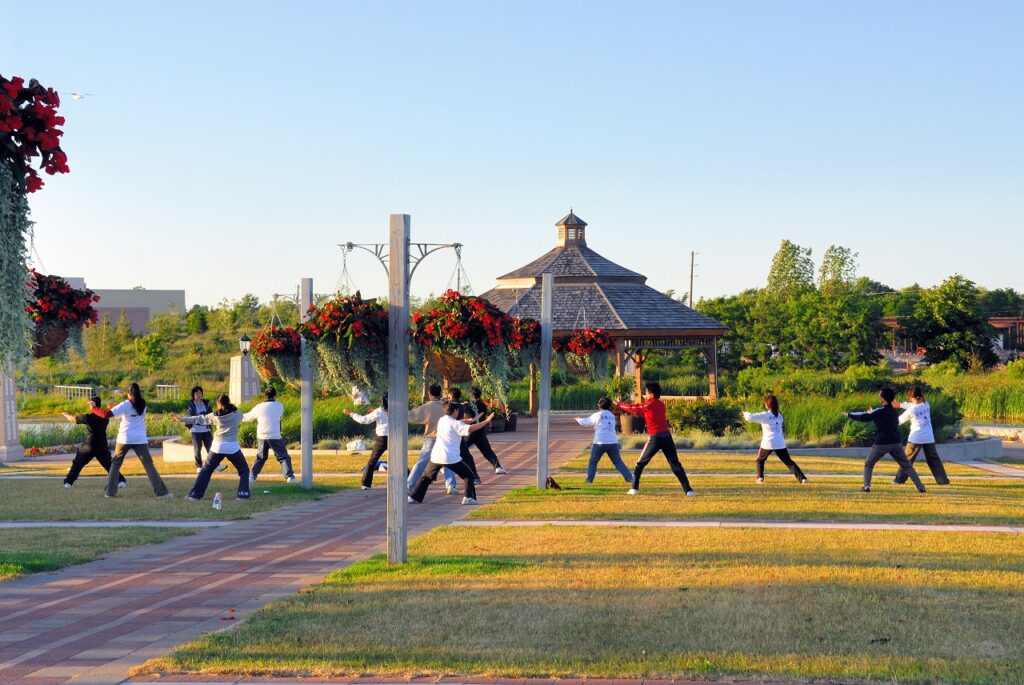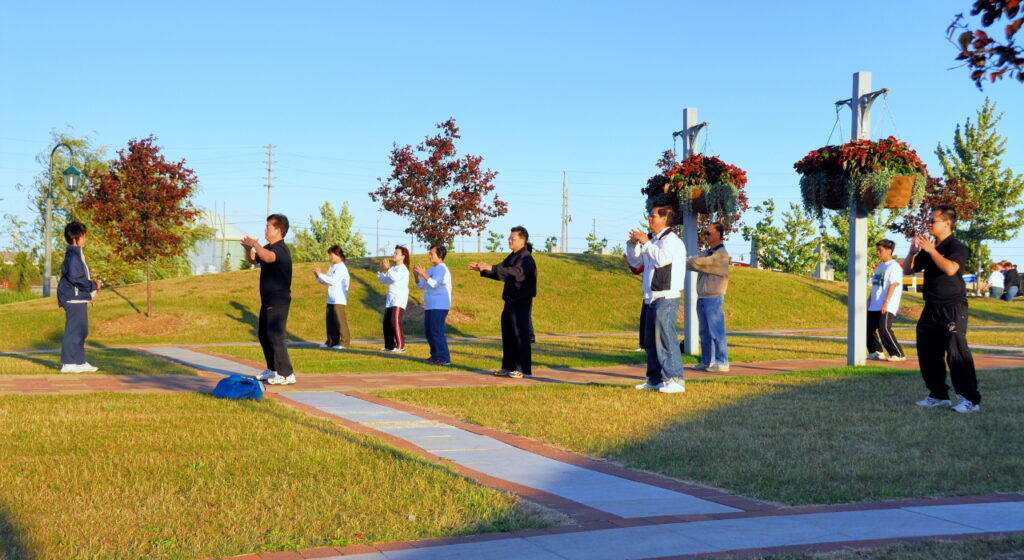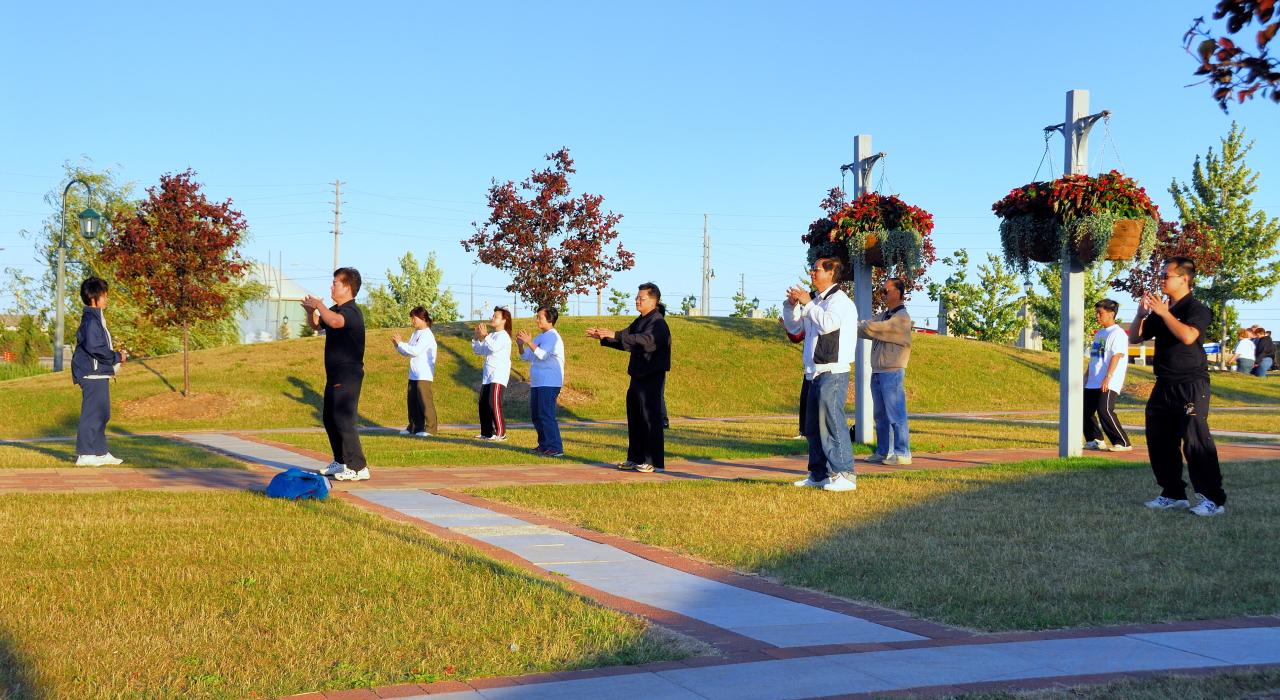National Health and Fitness Day
The first Saturday in June was proclaimed as Canada’s National Health and Fitness Day in December of 2014. Every year since then communities all over the country get involved by sponsoring and hosting health and fitness activities both indoors and outdoors. The goal is to make Canada the Fittest Nation on Earth!
For most people, the first thing that comes to mind when talking about health and fitness would be activities like running, swimming, cycling or playing some sports. If you’ve had injuries or illness, then these traditional fitness activities may seem daunting. Finding alternative fitness activities which will not only keep you mobile with low impact to your body but also elevate your heart rate safely may be a challenge.
Even though Tai Chi has been around for over 300 years with roots from China, it is still quite misunderstood by the majority of people, even people from China. The constant association of Tai Chi with seniors moving in slow motion in the park, on TV or in the movies leads one to believe that Tai Chi is only for older people or those who are incapable of moving fast.
There are increasing numbers of articles that try to dispel this myth, from health professionals to fitness instructors, let us take a good look at what Tai Chi really is.
Why Tai Chi?

The origins of tai chi come from martial arts, in fact, the direct translation from Chinese mean: “Supreme Ultimate Fist” and the founder of Tai Chi (taijichuan) and those in his village (Chen Village) were renowned martial artists that depend on their tai chi skills for survival and livelihood.
Tai Chi also has deep philosophical roots based on the concepts of Yin and Yang. This has allowed tai chi practitioners to excel not just in their martial arts but also in health. The Chinese government has come to understand its value as a proactive form of healthcare for those practicing tai chi. Eventually, the government recommended its practice amongst everyone in the country as a form of healthcare especially amongst the elderly. Today, much of the Western research has shown the same is true.
First, let us understand tai chi before we review some of its benefits.
Three Key Principles of Tai Chi

There are three fundamental principles of tai chi. When you understand these principles, you’ll understand why tai chi is one of the best forms of exercise you can find for your health and fitness.
Principle 1: Relax
One of the most identifiable themes about tai chi is to relax. However not everyone understands what true relaxation entails.
The muscle groups in our body typically exist in pairs and they work together. For example if I bend backwards, the back muscles contract while the front ones are stretched, and vice versa when I bend forward. To achieve muscle relaxation, the muscle itself, the opposing muscles as well as the complimentary muscles which assist the primary muscle must all be relaxed. This is when we achieve postural alignment.
Postural alignment is a basic requirement in Tai Chi. Postural alignment is critical to allowing the various pairs of muscle groups in our body to be utilized in a balanced manner. And, posture does not just refer to the spine, but the entire body even while it is in motion. In other words, it is also good biomechanics.
So before learning how to relax, you must learn good posture and how to maintain this posture through a full range of motions. Your body’s postural and core muscles will be fully engaged and exercised even though you may seem to be relaxed on the outside. This is how Tai Chi provides a significantly balanced workout for all muscle groups.
Principle 2: Slow
Being an internal martial arts, Tai Chi cannot be visually understood by just looking at the physical movements. Rather, the secret to tai chi is in the internal workings of the body where the naked eye cannot see. To train our body to access our internal power requires our mind to be focused and completely in sync with our body. This can only be accomplished when the pace is slowed down to allow our mind and body to perform “deep practice”, a term coined by Daniel Coyle in his book The Talent Code. And, this mode of deep practice was already understood and practiced by Tai Chi practitioners over 300 years ago without really knowing the science behind it.
When movements are slowed down, the various muscle groups need to be engaged longer in a holding pattern. Any imperfection or imbalance is amplified. Training your body this way is actually much harder and requires your full concentration mentally and physically. The adjustments and corrections you have to make are therefore imprinted more deeply into your consciousness and the neural pathways of your brain. When you continue to practice diligently in this manner, your movements become part of your muscle memory so they are instinctive and unconscious. Your body will know how to move in the correct way each and every time.
Principle 3: Soft
To be soft in tai chi means to be supple and flexible. Your joints are not locked and can move and flow freely from one movement to the next. The internal power of tai chi is based on this foundation where you need to be soft to harness the power of elasticity. Just like the bow and arrow, the bow needs to be flexible to generate the force required to shoot the arrow.
When your body is soft, you are better able to handle impact which minimizes injuries. Imagine jumping up and then landing on your feet, the difference between a stiff joint and a flexible one. If the joints in your legs are stiff, you will likely feel a painful jar up your leg and spine. In a worst case scenario it might even break a bone. When the joints are flexible, they act as springs and can absorb the impact minimizing any potential injuries to your body.
Benefits

Due to the unique nature of how tai chi is practiced based on these 3 key principles, you receive tremendous health benefits even if you are not planning to be a martial artist.
- Improved flexibility
- Improved posture
- Improved balance and proprioception
- Increased muscle strength of all muscle groups
- Maintaining good cognitive health as we age
- Relief from stress and anxiety
Now what makes tai chi even more appealing is how easy it is for just about anyone to get started.
- No equipment or special attire required
- You can practice it anywhere indoors or outdoors with just a bit of space to move about
- It is slow and low impact making it accessible even to those with inactive lifestyles
- There is very little chance of injury
- It is a relatively low cost activity
So the next time you are thinking of an activity for Health and Fitness, try Tai Chi. You may be surprised at what it can do for both your mind and body.

